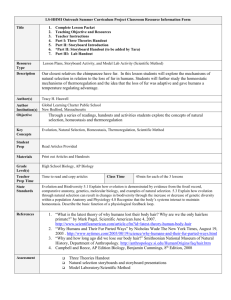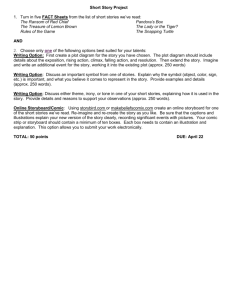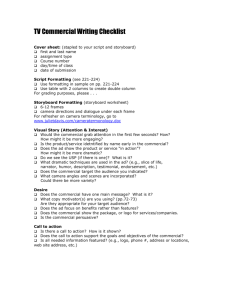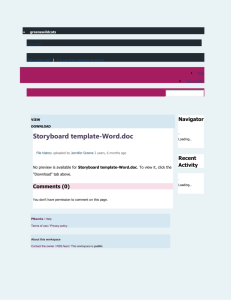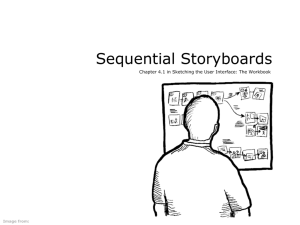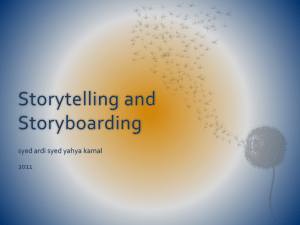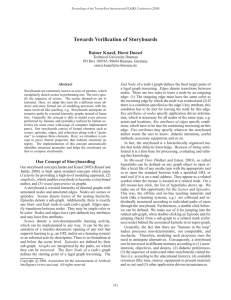Circe Lesson Plan
advertisement
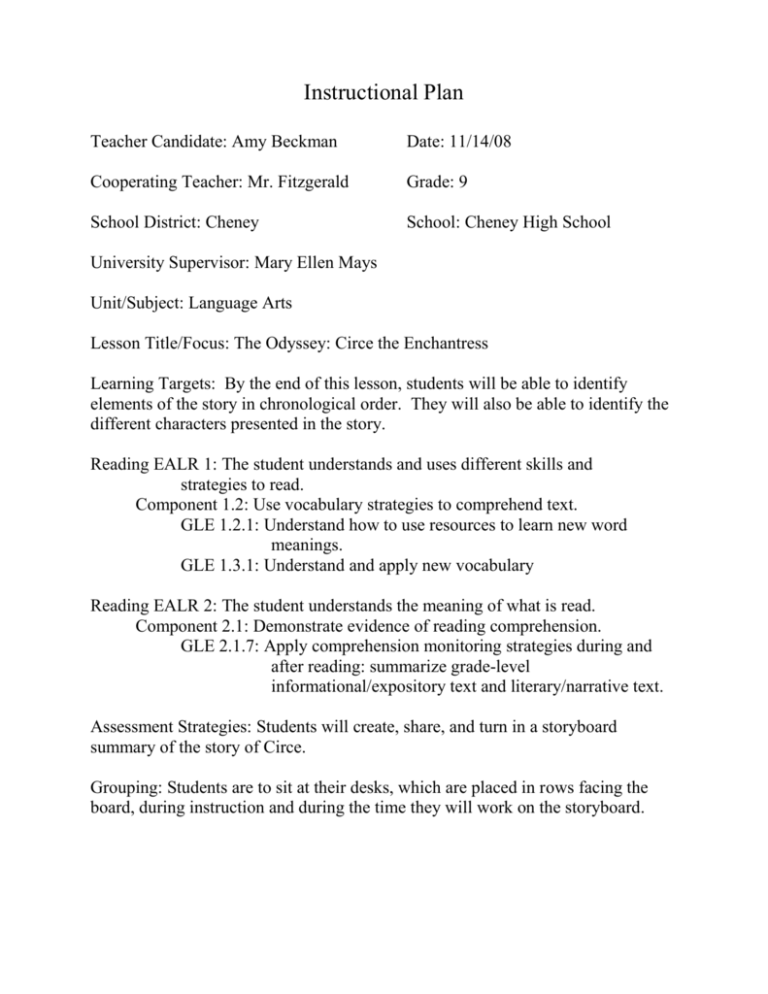
Instructional Plan Teacher Candidate: Amy Beckman Date: 11/14/08 Cooperating Teacher: Mr. Fitzgerald Grade: 9 School District: Cheney School: Cheney High School University Supervisor: Mary Ellen Mays Unit/Subject: Language Arts Lesson Title/Focus: The Odyssey: Circe the Enchantress Learning Targets: By the end of this lesson, students will be able to identify elements of the story in chronological order. They will also be able to identify the different characters presented in the story. Reading EALR 1: The student understands and uses different skills and strategies to read. Component 1.2: Use vocabulary strategies to comprehend text. GLE 1.2.1: Understand how to use resources to learn new word meanings. GLE 1.3.1: Understand and apply new vocabulary Reading EALR 2: The student understands the meaning of what is read. Component 2.1: Demonstrate evidence of reading comprehension. GLE 2.1.7: Apply comprehension monitoring strategies during and after reading: summarize grade-level informational/expository text and literary/narrative text. Assessment Strategies: Students will create, share, and turn in a storyboard summary of the story of Circe. Grouping: Students are to sit at their desks, which are placed in rows facing the board, during instruction and during the time they will work on the storyboard. Beckman 2 Learning Experience: Intro- Take attendance. When the students are seated and the bell has rung, students will be asked to each get a textbook and return to their seats. Instructor will review the sections of The Odyssey that has been covered in class before moving on. Reading/Listening Activity: Students will follow along in their books while listening to The Enchantress Circe (p. 673), read by either the instructor or other students. Guidance/Questions – Who can tell me what happened? Odysseus and his men land on the Island and then what? What was the name of the man leading the exploration trip? Art Activity: Students will create a storyboard of the events in the story. Emphasis will be placed on the summary of each scene but students will be encouraged to draw pictures as well. Paper will be provided for each student. Students have been asked to bring their own drawing materials but some will be available for class use. Assessment: Students will be asked to turn their storyboards in at the end of class or finish it at home and bring it to class completed the next class day. Whole Class – All students will participate in the reading/listening activity, following along in their books while they listen. Individual – Students will work on the storyboard independently. Silence is not expected or required for this activity, however, students are expected to do their own work, and noise level will be monitored. Closing – Any volunteers will be able to share their storyboards with the class. Completed storyboards will be collected. Homework for the next class will be given. Materials, Resources, and Technology: Paper – one for every student Pencils/pens Markers/colored pencils Erasures Beckman 3 Instructional Plan Rationale Learning Targets 1. The learning targets for this lesson are derived from the EALRs listed above. This lesson was designed to introduce students to new vocabulary associated with the parts of the human body. Students will be asked to identify parts of the body and show that they can translate vocabulary words from English to Spanish and from Spanish to English. 2. Future lessons, such as lessons concerning different sports, require knowledge of the parts of the body. 3. Since students will already know how to refer to their own bodies in English, this lesson provides an opportunity to learn how students/people from another culture do the same thing. 4. Learning targets are appropriate for all students since all students have a body. If any student cannot participate due to the loss of a limb or other handicap, they will able to refer to pictures from the handout and this lesson is still relevant for conversing with other students. Assessment Strategies 1. Information will be given in a variety of forms (written, verbal and pictorial) so that students of every intelligence have an equal opportunity to learn. Also, students will be allowed time to help each other on the handout so that students who may struggle with short-term memory will be able to fully participate. 2. This strategy accommodates different linguistic and cultural backgrounds by providing completely new material. Students, regardless of background, all start the lesson at the same level. Learning Experiences 1. Students will be encouraged by the instructor to offer any further vocabulary that they may know, either from another language or simply vocabulary that is not included in the handout. The various forms of presenting the material allows all students to participate in the way they are most comfortable. All students will be treated with equal respect and encouraged to be fully involved in classroom activities. 2. Students with disabilities and/or 504 students will be accommodated as needed with appropriate individual consideration. 3. The lesson incorporate multicultural perspectives by teaching and practicing the language of another culture. 4. Students will be required to infer the meaning of pictures and how they relate with the vocabulary. The homework handout will require problem- Beckman 4 solving skills to place the correct label for a body part on a picture of a skeleton, which may or may not have that particular body part. 5. This lesson promotes an inclusive and supportive learning community by allowing all students to participate in an environment of respect among their peers. 6. This lesson is designed to introduce new material to students. This lesson uses the Theory of Multiple Intelligences by presenting material through auditory, kinesthetic, visual and verbal means. Family Interactions -Students will be able to take their finished storyboard home and share it with their parents.
